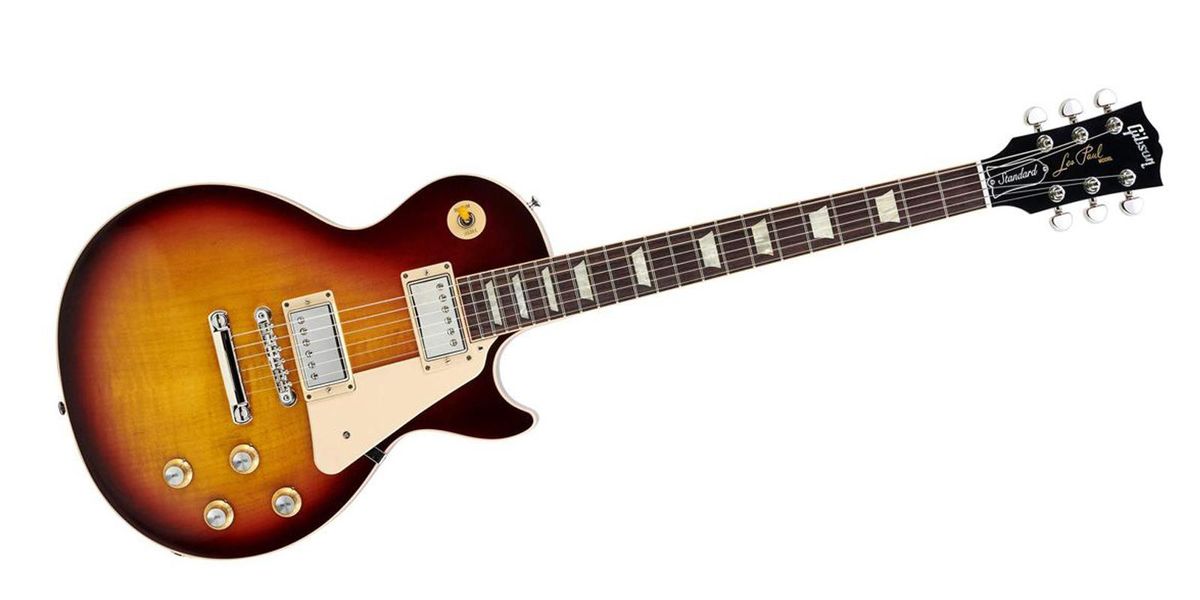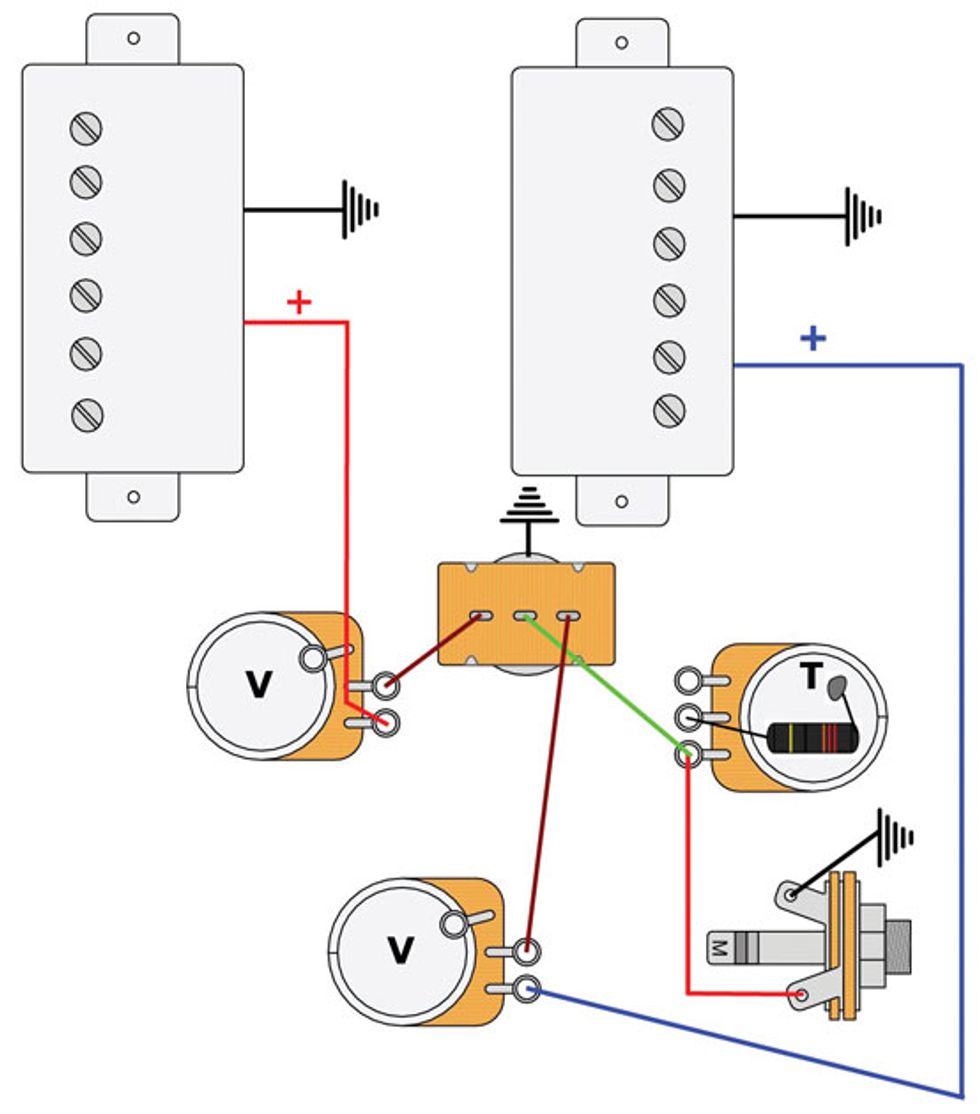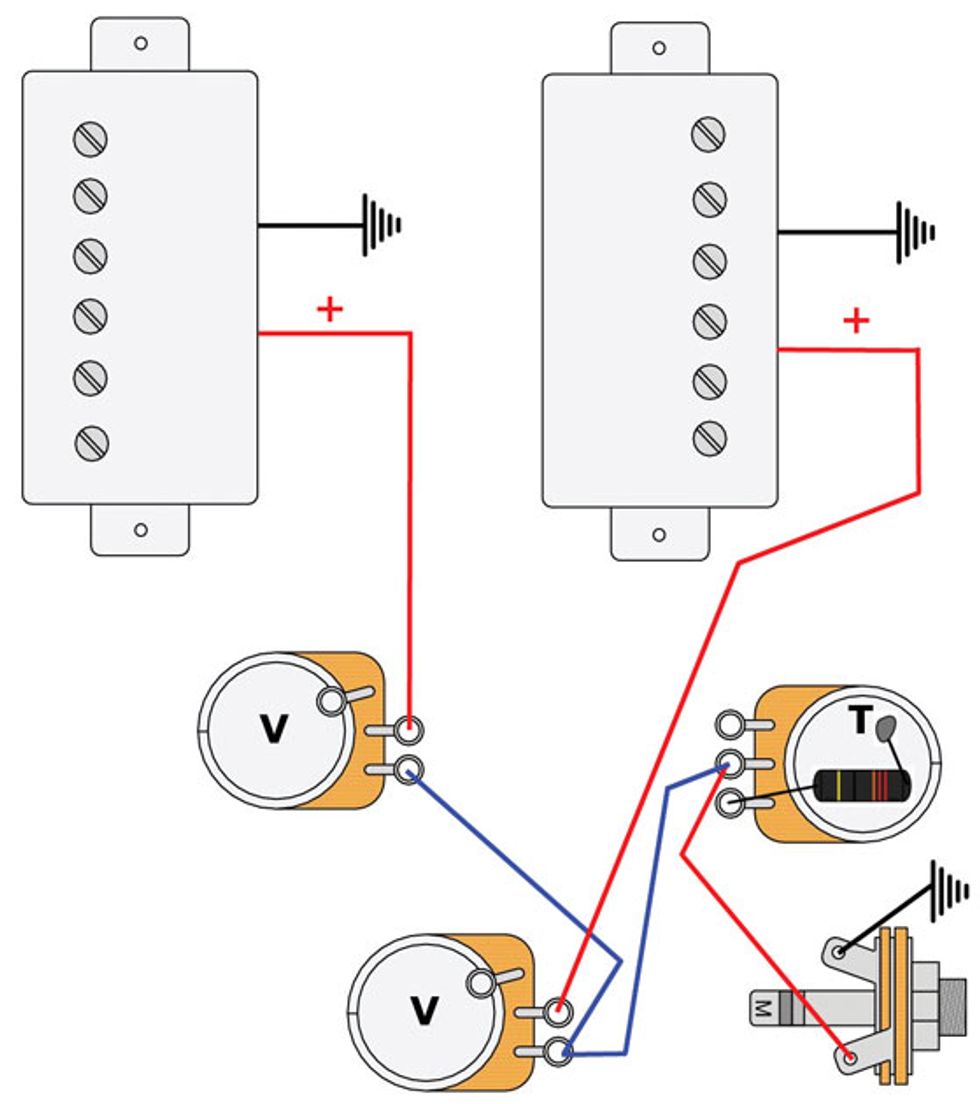
Have you ever wanted a single tone control for your Les Paul? If so, check out this easy mod.
Ready to explore some more alternative Les Paul wirings? We first traveled this road a few months ago in a previous column, so I feel it's high time we revisit the topic.
Just so we're all on the same page: When we discuss “Les Paul mods" in PG, we're typically referring to a dual-humbucker configuration with individual volume and tone controls for each pickup. This means you can apply these mods to virtually any guitar with similar configurations, such as ES-335s and SGs, as well as countless other models from many manufacturers.
Fig. 1. Diagram courtesy of singlecoil.com
The dual-volume/dual-tone design works great, but many contemporary players come to our shop requesting a different configuration. We refer to some of these configurations as “master wirings," because the primary goal is to create a master volume or tone function for both pickups. The basic idea is to facilitate further mods by freeing up one or two pot positions. This gives you space to install additional switches or whatever you like.
Last time around, we explored a radical version of a Les Paul master wiring that simply consisted of a master volume and master tone. Very Tele like, right? This time the tone pot is the master item, so this new wiring scheme will have a master tone plus two individual volume controls. As a bonus I'll show you a very intriguing alternative version of this wiring.
Having a master tone and two separate volume controls in a dual-humbucker—aka HH—configuration is nothing new. In fact, it's widely used by such companies as Ibanez, Schecter, and Charvel.
Cap and trade. The basics of this wiring are easy, as you see in Fig. 1. Again, each of the pickups has a dedicated volume control, yet they share one common tone control. Because it's not possible to use different tone caps for each pickup with this wiring, you have to decide what tone cap will work best for both pickups. For most factory stock wirings like this, the value is 0.022 µF. But in a HH configuration, many players like the classic 0.022 µF for the bridge pickup and a 0.01 µF tone cap for the neck pickup, so a practical compromise is a value of 0.015 µf. This gives you the best of both worlds, but you should feel free to experiment with the tone cap's value and type.
It doesn't matter which one of the tone pots you want to keep—the wiring will work for either of them—and you can assign each pickup to the volume pots of your choice.
Fig. 2. Diagram courtesy of singlecoil.com
A very intriguing, though somewhat unconventional version of this wiring goes one step further by also removing the 3-way toggle switch (Fig. 2). This converts the circuit into a kind of Les Paul blend/mix wiring, similar to the Fender Jazz Bass. With this wiring you can create a lot of different tones by mixing the pickups in exactly the proportions you want.
Of course, without the 3-way pickup selector switch both pickups are always engaged and you lose your preset control. This means to make a pickup inaudible, you can't just switch it off—you have to turn its pot fully counterclockwise. For example, if you want the bridge pickup only, you have to fully close the neck pickup volume and fully open the volume for the bridge pickup. Some people swear by this wiring, while others find it impractical. You'll have to decide whether it works for you, but it can't hurt to give it a try.
That's it! In a future column we'll close this chapter with Les Paul master wiring #3. Meanwhile, we'll tackle a different guitar mod next time. Until then ... keep on modding!




